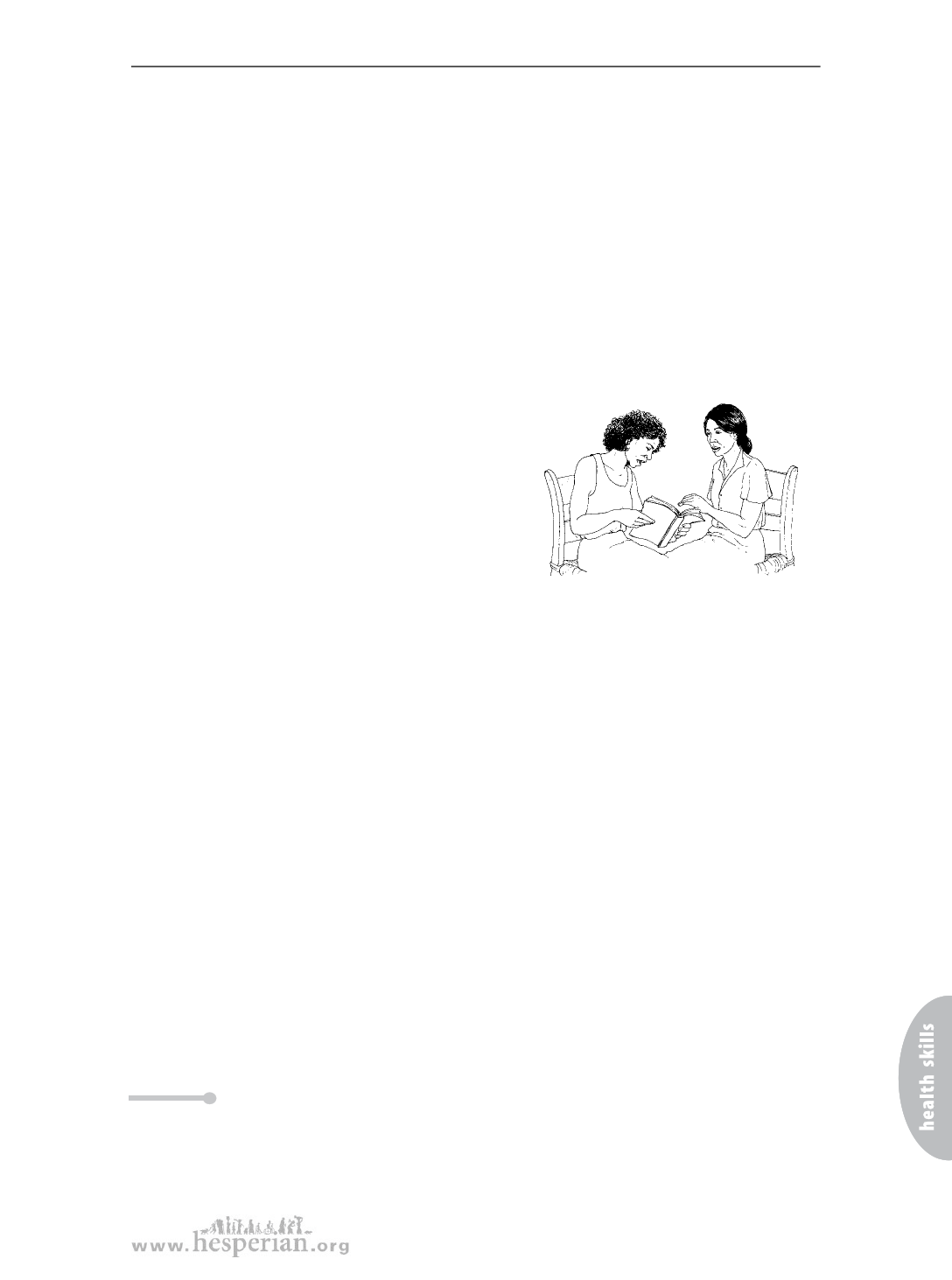
STIs that affect the whole body
Staying Healthy with HIV
When a woman’s immune system is being attacked by HIV, it is very important for
her to prevent and treat other infections:
• If she has any signs of other STIs, like itching, a rash, a strange discharge or
sores around the genitals, she should see a health worker.
• She needs to eat more food and have a healthy diet (see page 33). Taking a
multivitamin pill may also help her.
• She needs to protect herself from tuberculosis (TB). People with HIV die
more from TB than any other illness. A woman with HIV should stay away
from people with active TB, and if she develops signs of TB, she should see a
health worker right away. Signs of TB are coughing, night sweats, fever, or
losing a lot of weight.
• She should drink only water that is free
from germs which could cause diarrhea
or other problems.
Women with HIV also need emotional
support. Encourage them to seek support from
people they trust. They can learn a lot from
others who have HIV.
A woman with HIV who is starting to become ill (for example with cracks and
sores around the mouth, weight loss, itching rashes, or many colds) can take
cotrimoxazole every day to protect her from many infections and help her immune
system stay healthy longer. See wpage 478.
If a woman can, she should get a blood test called a CD4 count. This test shows
how strong our immune system is by counting CD4 cells. The higher the number
is, the better the body can fight infections. A woman whose CD4 count is under
350 needs treatment for her HIV with HIV medicines called ART.
Medicines that control HIV
Medicines called antiretroviral therapy, or ART, can make people with HIV much
healthier and help them live much longer. These medicines also help prevent HIV
infection for a baby during pregnancy and labor.
ART must be taken every day at the same times to keep working well. If a
woman stops taking it, her HIV will grow strong enough to make her ill again.
Afterwards, if she restarts taking ART, her HIV may be more difficult to treat with
the same medicine.
There are several possible medicine combinations to use. More detailed
information on using ART starts on page 492 of this book.
Note: Where ART is still not easily available, it may be difficult for
every woman who needs it to take ART for her own health. But even
where this is true, women and midwives can probably get medicines
to prevent HIV from spreading to babies during birth. See page 495.
A Book for Midwives (2010)
335